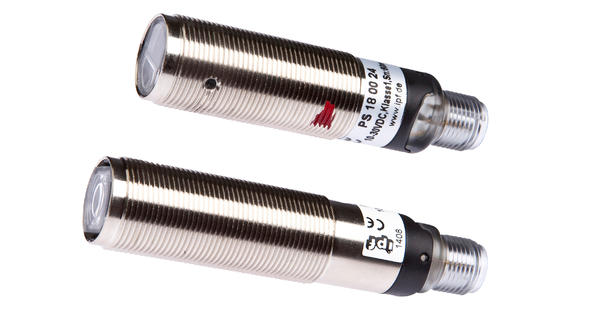The PS180024 & PE180424 light barrier is mounted on the buffer zones of a continuous pickling line. The plant has two of these zones. On the buffer zones, partially hot non-ferrous plates up to 500°C are transported on roller conveyors. The laser light barrier inquires the front position of the plate. Since the plates can be of different thicknesses (8mm to 160mm) and can be up to 6m long or wide, a system had to be used which can inquire the complete area just above the roller table via a length of 6.8m. The light barrier consisting of transmitter and receiver is the best solution in our case, as it generates a small measuring point or light spot that functions optimally via a large distance and is well adjusted, even in the adverse environmental conditions caused by the pickling process (cf. photos).
In the pickling chamber itself, the plates are sprayed with pickle (15 % to 20 % sulfuric acid) from above and below on roller tables in reversing mode. There, the position is inquired by three parallel operated sensors of type IO300106 each at the input and at the output of the chamber. The sensors are arranged below the plate and detect the plate moving above. We chose three sensors per side, since the plate in the chamber can shift slightly in longitudinal orientation, thus ensuring that at least one sensor responds. We chose inductive sensors with a metallic sensor surface made of stainless steel with a high switching distance, since an optical solution was out of the question due to the spray mist. The sensors proved to be very robust and resistant to the sulfuric acid. The only failures resulted from exposure to high temperature for too long, e.g. when a plate via a sensor was not conveyed further due to transport errors, or the pickle/sulfuric acid used ate away at the sensor feed line.
We have chosen ipf sensors because of the price-performance ratio, the speed of delivery and, last but not least, the on-site service.
The complete application report can be found in the following PDF file.





